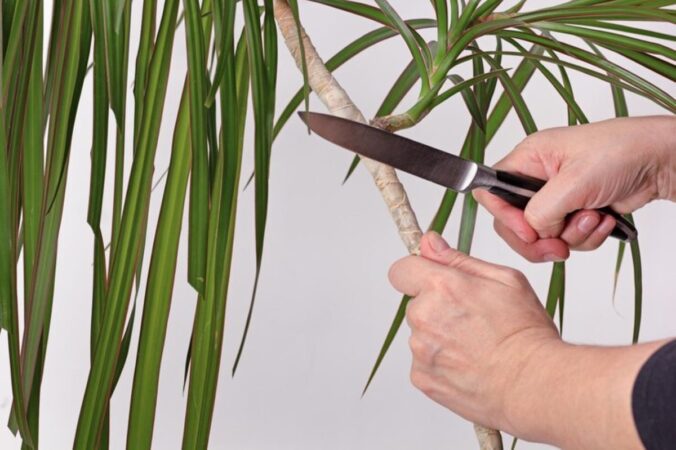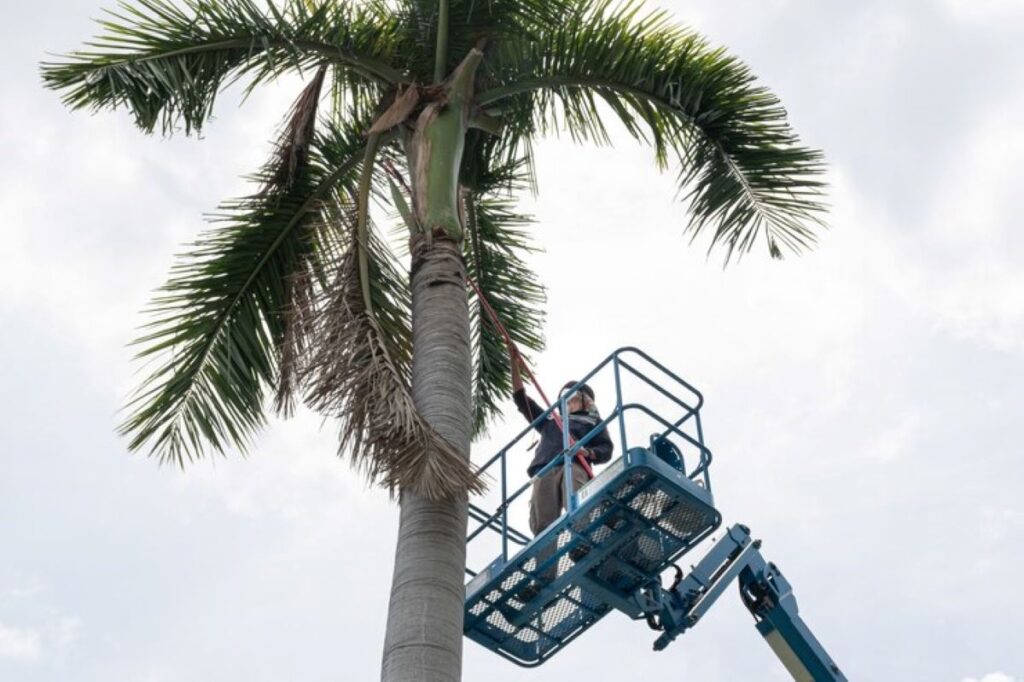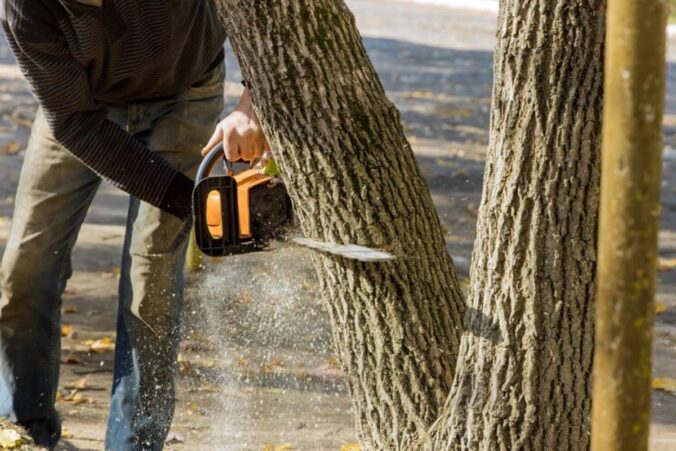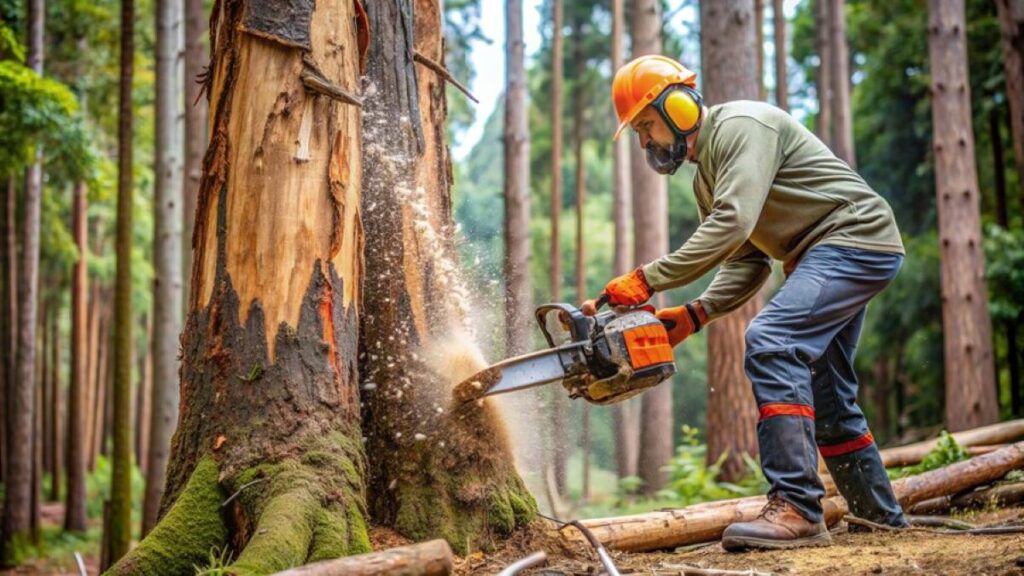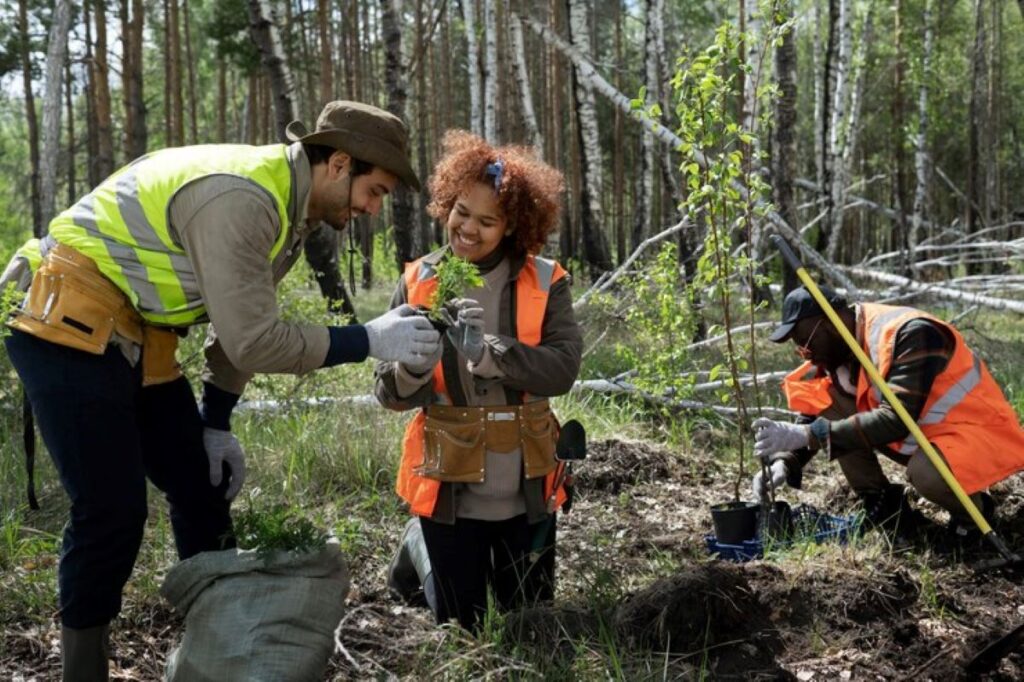Palm trees are a stunning addition to any landscape, offering tropical allure and shade. However, to maintain their beauty and health, regular pruning is essential. Proper pruning not only enhances their aesthetic appeal but also ensures the overall vitality of the tree. This guide will explore the ins and outs of palm tree pruning, including key techniques, tools required, and post-pruning care to keep your palms looking their best.
Understanding the Basics of Palm Tree Pruning
Before diving into the specifics of palm tree pruning techniques, it’s important to understand what pruning entails and why it is crucial for palm trees. Pruning is the process of removing dead or overgrown branches to promote healthy growth. When conducted correctly, it can foster a more vigorous tree and improve its structural integrity. Additionally, proper pruning can enhance the overall aesthetic appeal of your landscape, making your palm trees stand out as vibrant, healthy specimens.
The Importance of Pruning Palm Trees
Pruning palm trees serves several vital purposes. Firstly, it helps in the removal of dead or damaged fronds, which can harbor pests and diseases. Secondly, it encourages new growth and maintains the palm’s shape, ensuring that it remains an attractive focal point in your landscape. Furthermore, regular pruning can minimize the risk of property damage caused by falling fronds during storms. Beyond these practical benefits, pruning can also improve air circulation around the tree, which is essential for preventing fungal infections and promoting a healthy environment for the palm to thrive.
When to Prune Your Palm Trees
Timing is crucial when it comes to palm tree pruning. The best time to prune is in the late winter or early spring, just before the onset of new growth. During this period, the tree is less stressed, and any wounds made through pruning will heal more effectively. It’s essential to avoid pruning during the peak growth season, as this can weaken the tree and make it more vulnerable to diseases. Additionally, understanding the specific growth patterns of different palm species can further refine your pruning schedule, ensuring that each tree receives the care it needs at the right time.
Moreover, it is beneficial to monitor your palm trees throughout the year. Observing the fronds for signs of yellowing or browning can indicate that it’s time for a trim. Regular inspections can also help you catch any potential pest infestations early, allowing for timely interventions that can save your trees from more severe damage. Keeping a close eye on your palms not only aids in maintaining their health but also enhances your knowledge of their growth habits and needs, making you a more effective caretaker of these majestic plants.
Tools Needed for Pruning Palm Trees
Equipping yourself with the right tools is essential for effective and safe pruning. Using the correct equipment not only facilitates a cleaner cut but also helps to minimize stress on the tree. Below is a list of indispensable tools for pruning palm trees.
Safety Equipment for Palm Tree Pruning
Before starting the pruning process, it’s vital to prioritize safety. Essential safety equipment includes:
- Hard Hat: Protects your head from any falling debris.
- Safety Goggles: Shields your eyes from dust and flying particles.
- Gloves: Protects your hands while handling tools and working with plant material.
- Non-slip Footwear: Ensures stability while working on ladders or uneven surfaces.
In addition to these basic safety items, consider wearing a high-visibility vest, especially if you are working in an area with traffic or other potential hazards. It’s also wise to have a first aid kit on hand, just in case of any minor accidents. Being prepared not only helps in ensuring your safety but also allows you to focus on the task at hand without unnecessary distractions.
Choosing the Right Pruning Tools
Selecting the correct pruning tools can make a significant difference in the outcome of your work. The following tools are commonly used in palm tree pruning:
- Hand Pruners: Ideal for cutting smaller fronds.
- Loppers: Useful for larger fronds that require more leverage.
- Saw: Necessary for removing thicker fronds or branches.
- Ladder: Provides access to high fronds that need to be pruned.
- Pruning Pole: A long tool specifically designed for reaching high areas without a ladder.
When choosing your tools, consider their quality and durability. Investing in high-quality, sharp blades will not only make your cuts cleaner but also reduce the effort required during the pruning process. Additionally, look for tools with ergonomic designs that can help minimize strain on your hands and wrists, especially during extended periods of use. Regular maintenance, such as cleaning and sharpening your tools, will also prolong their life and effectiveness, ensuring that you are always ready for your next pruning session.
Step-by-Step Guide to Pruning Palm Trees
With the right tools and safety gear in place, you are ready to begin pruning your palm trees. Following a systematic approach will ensure efficient pruning.

Identifying Which Fronds to Prune
The first step in the pruning process is to evaluate the palm and identify which fronds need to be removed. Look for fronds that are:
- Completely dead or brown
- Diseased or infested with pests
- Growing inwards towards the trunk
- Overly long or heavy, posing a threat to the tree’s stability
Only prune what is necessary to maintain the tree’s health and appearance. Excessive pruning can lead to stress and negatively impact the palm’s ability to recover and thrive. Additionally, it’s important to consider the type of palm you are working with, as some species have unique growth patterns and requirements. For instance, some palms naturally shed their fronds, while others may require more frequent attention to maintain their aesthetic appeal. Understanding these nuances can help you make more informed decisions about which fronds to prune.
Proper Techniques for Cutting Palm Fronds
When you are ready to make cuts, use clean and sharp tools to avoid damaging the tree. Here are some techniques to follow:
- Make clean cuts at an angle to prevent water from pooling on the cut surface.
- Avoid cutting too close to the trunk, as this can cause damage.
- Try to make cuts without tearing the fronds, which can leave jagged edges.
After making your cuts, step back and assess the tree’s appearance to ensure a balanced look. It’s also beneficial to clean up any fallen fronds or debris from the pruning process, as this can help prevent pest infestations and diseases that may thrive in decaying plant matter. Furthermore, consider the time of year when pruning; late winter or early spring is often ideal, as it allows the palm to recover during the growing season. This timing can enhance the overall health of the tree and promote lush new growth in the months to come.
Common Mistakes in Palm Tree Pruning
Even with the best intentions, it’s easy to make mistakes when pruning. Being aware of common pitfalls can help you avoid costly errors.
Over-pruning: Risks and Prevention
One of the most significant mistakes is over-pruning, which can weaken the tree and leave it susceptible to disease. To prevent this, always follow the guideline of ‘less is more.’ Remove only the fronds that are necessary to promote health without compromising the palm’s integrity. Additionally, it’s essential to recognize that different species of palms have varying needs. For instance, some palms naturally shed their fronds, and intervening too aggressively can disrupt their natural growth cycle. Understanding the specific requirements of your palm species can lead to healthier trees and a more vibrant landscape.
Incorrect Timing of Pruning
Another common mistake is pruning at the wrong time of year. As mentioned earlier, pruning should ideally occur in late winter or early spring. If you prune during the active growing season or in the fall, you risk causing stress to the tree and may stimulate unnecessary growth that the palm cannot sustain. Moreover, pruning during the wrong season can expose the palm to harsh weather conditions, such as frost or extreme heat, which can further compromise its health. It’s also worth noting that certain pests and diseases are more prevalent during specific times of the year; therefore, timing your pruning correctly can help mitigate these risks and ensure your palm remains robust and thriving.
Post-Pruning Care for Palm Trees
Once you have completed your pruning, your responsibilities do not end there. Proper post-pruning care is essential for the recovery and health of your palms.
Watering and Fertilizing After Pruning
After pruning, ensure that your palm trees receive adequate water, as this helps promote new growth and recovery. Fertilization can also aid in this process. A slow-release fertilizer formulated for palms can provide essential nutrients that support the healing and growth of new fronds. Additionally, consider the timing of your watering; early morning is often the best time to water, as it allows the moisture to soak into the soil before the heat of the day evaporates it. During the hotter months, you may need to increase the frequency of watering to ensure that your palms do not become stressed.
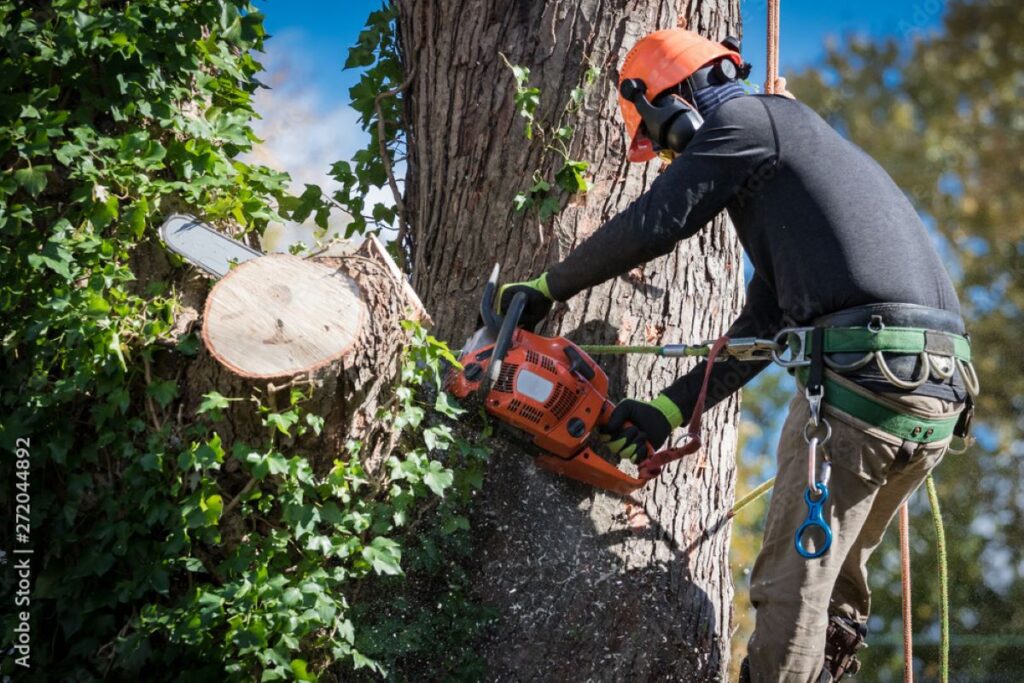
Monitoring for Diseases and Pests After Pruning
Keep an eye on your recently pruned palms. Monitor for any signs of disease or pest infestation, which can be more prevalent after pruning. Look for symptoms such as discoloration or wilting of the fronds. Early detection allows for prompt treatment, ensuring that your palm maintains its health and beauty long after the pruning process is complete. In addition to visual inspections, you might also want to check the soil around the base of the palm for any signs of fungal growth or unusual odors, which can indicate root problems. Implementing a regular inspection schedule can help you catch any issues before they escalate, allowing you to take action swiftly.
Moreover, consider applying a protective fungicide or insecticide if you notice any concerning signs. These products can help safeguard your palm trees from potential threats, especially in the weeks following pruning when they are particularly vulnerable. By following these guidelines, you can effectively prune your palm trees while maintaining their aesthetic appeal and encouraging healthy growth. Regular maintenance will help ensure that your palms continue to thrive and enhance your landscape for years to come.
See Also : Palm Tree Removal: How an Arborist Can Safely Remove Your Palm Trees
